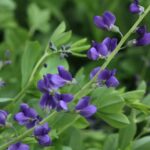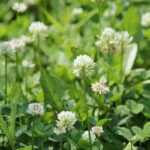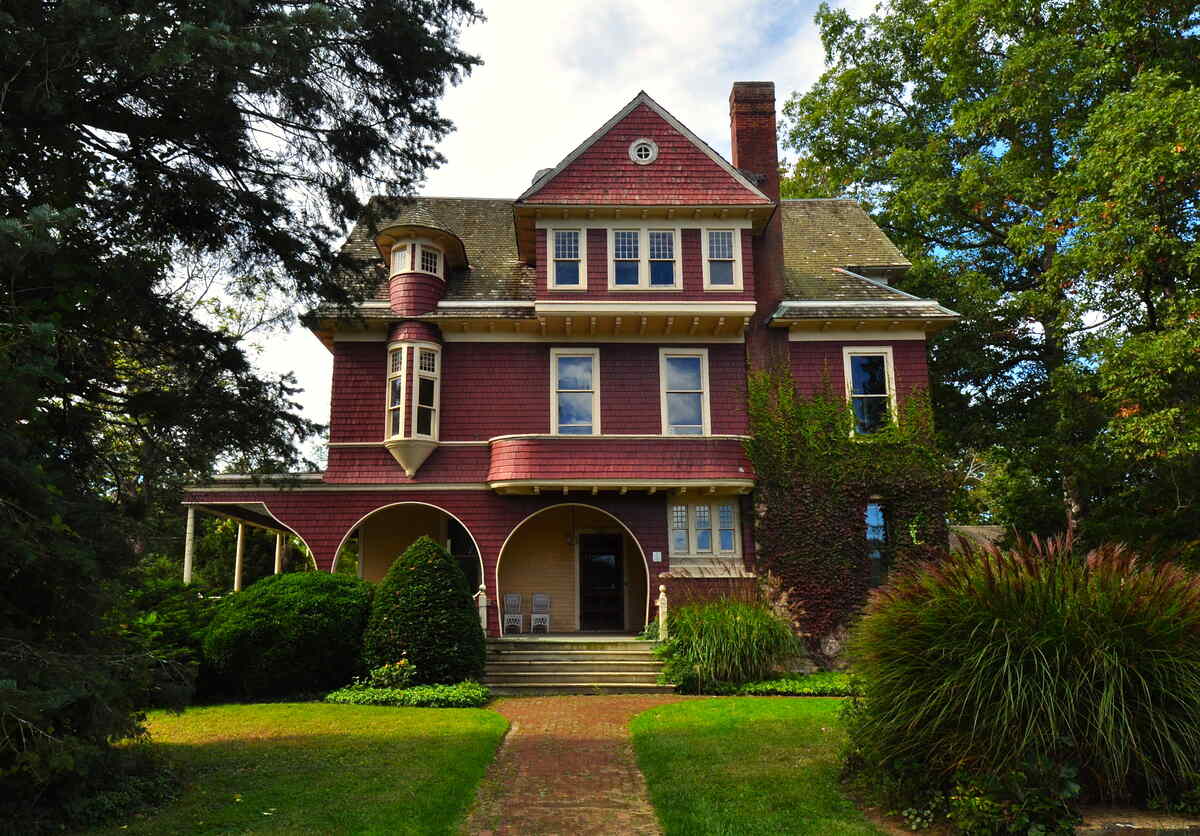
Lawn care is a year-round job that involves cleaning up the yard and applying herbicide in the spring, then dethatching, aerating and fertilizing, followed by a good watering schedule in the summer, and then fertilizing again in the fall to prep your grass for the winter.
Caring for your lawn all year will help it look its best. But it’s no easy job. You can either study the lawn care tips and schedule below or call a pro to handle it for you.
February
Clean Up Your Yard
Make sure that your lawn is clean and beautiful this spring. The first step to starting lawn care for the year is to clean up yard debris in late February. Not only does it make the space look much better, but it also helps to prevent lawn diseases by removing debris that will rot or smother the lawn.
Wait to rake until all snow has melted. Read more about it below.
March
Start Mowing
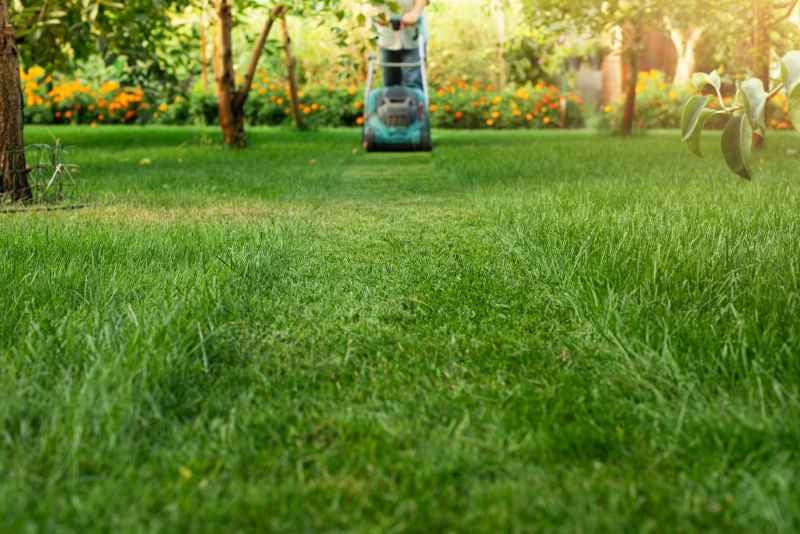
Before your first mow of the season, pull out your lawn mower and replace the gas.
You can start mowing when your grass gets tall enough that you’ll reach your desired height if you mow one-third (refer to the “Mow Smart” section further below). This might be from March to April, depending on where you live in Virginia and what grass you have. Remember to never mow wet or dewy grass, or you could end up with an uneven cut.
Hear it from a pro: Hampton Roads lawn care pro Chelsea Morris says, “Here in Hampton Roads (Virginia Beach, Norfolk, Portsmouth, Chesapeake, etc.) we typically start mowing around the first week of March.”
Prep for Irrigation
Virginia grasses usually survive drought. But if you want to keep your lawn green and perfect, you should water it regularly. You can check and prime your irrigation system in early March, then wait to water until your lawn needs it.
The best time to begin watering is when your grass shows signs of dryness. You can start watering around mid- to late May, but don’t feel under pressure. Look out for visible footprints on your lawn, or any other signs your lawn needs watering.
Hear it from a pro: Morris recommends checking and priming your irrigation system around the first week of March but waiting until at least mid-May to begin irrigating (see more about that below).
Apply Pre-emergent Herbicide
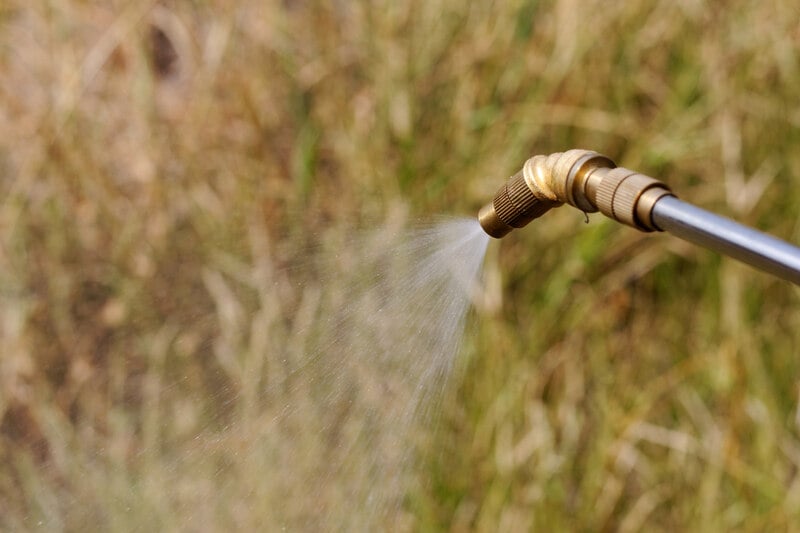
Weeds like crabgrass love to join in on the fun and accompany the beautiful green grass on your lawn. If you face a weed problem beyond your hand-plucking abilities, use pre-emergent herbicide.
In their lawn care schedule for tall fescue grasses, Virginia State University recommends using one of these pre-emergent herbicides:
- Pendimethalin
- Benefin (Balan)
- Dithiopyr (Dimension)
- DCPA (Dacthal)
However, avoid Siduron (like Tupersan or Trey).
Even though late February is already an okay time to apply pre-emergent herbicide, the University recommends making the first application between March 5 and 10. A second application may not be necessary; read your product label and go from there.
Caution: If you use a crabgrass pre-emergent herbicide, you’ll prevent any new seed from germinating. Don’t overseed after using it.
Rake Your Yard
Be careful to rake once the ground has dried and firmed up. It stops snowing at different times in varying parts of Virginia. Coastal areas like Norfolk and Virginia beach usually have milder winters with less snowfall. However, mountainous regions in the western part of Virginia like the Blue Ridge Mountains and Shenandoah National Park often have colder temperatures with prolonged snowfall.
In general, it usually stops snowing by late March to early April.
April
Start Mowing
If you haven’t started mowing in March, you probably should by now. As already mentioned, you can start mowing when your grass gets tall enough that you’ll reach your desired height if you mow one-third.
Rake if You Haven’t Yet
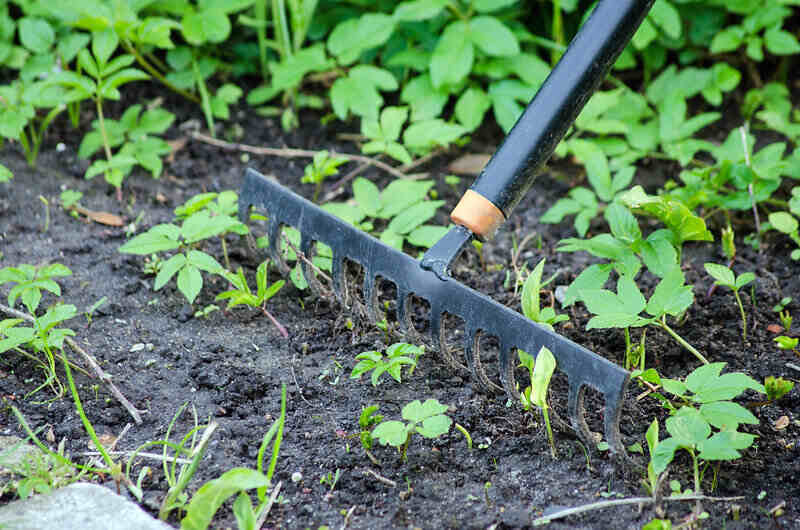
As mentioned above, in some places in Virginia, snow only melts in early April. If you haven’t raked in late March, do so now.
Dethatch and Aerate Warm-season Grasses
In Virginia, dethatching is usually only necessary if you also overseed. But you should aerate yearly in any case.
Because the best time to dethatch and aerate is before you fertilize, you should do it in April to late August if you have warm-season grass. If you have cool-season grass, wait until September to October.
Fertilize Warm-season Grasses
After a soil test, you’re ready to roll with fertilizer. If you have warm-season grass, fertilize from April to late August. However, take note that some warm-season grasses, like bermudagrass, don’t actually need fertilizer.
Overseed Warm-season Grasses
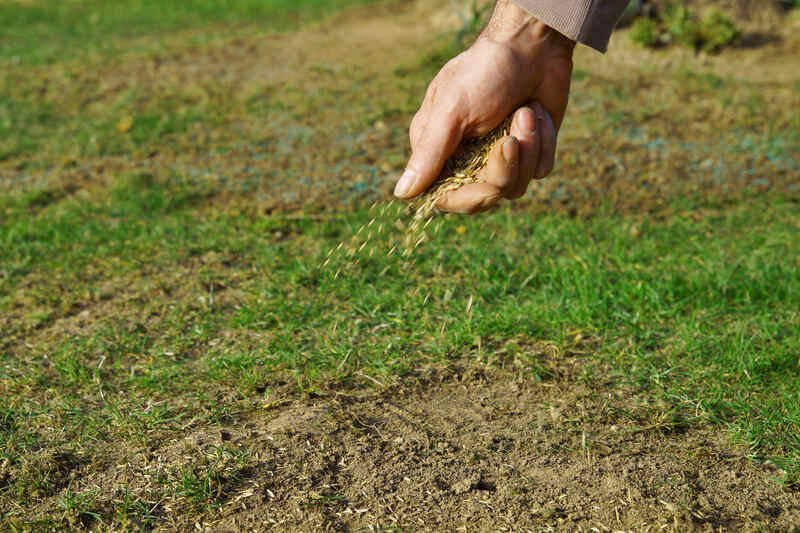
After you fertilize is a prime time to overseed. If you fertilized in April, wait two weeks, then overseed.
Eliminate Remaining Weeds
If some weeds managed to spawn in your yard, remove them throughout the entire growing season.
As for post-emergent herbicide, Virginia State University recommends applying a combination of 2, 4-D and dicamba or mecoprop (MCPP) to further control weeds when mid-day temperatures hit above 60 degrees Fahrenheit. That’s normally between April and May (but be careful not to apply post-emergent herbicide during the spring transition period).
However, it’s worth noting that there’s evidence that 2, 4-D is highly toxic and potentially even dangerous to health and the environment. Hand-plucking is always a safer and more organic approach to weed removal.
May
Eliminate Remaining Weeds if You Haven’t Yet
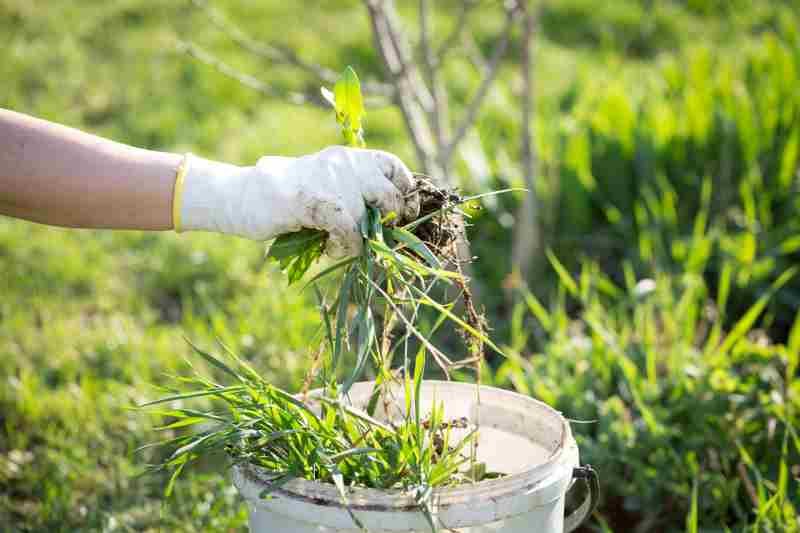
If you haven’t applied a combination of 2, 4-D and dicamba or mecoprop (MCPP) yet, you can do so in May, or whenever the temperatures hit above 60 degrees Fahrenheit.
However, as mentioned above, 2, 4-D is highly toxic and potentially even dangerous to health and the environment. Hand-plucking is always the best choice.
Dethatch and Aerate Warm-Season Grasses if You Haven’t Yet
If you haven’t already dethatched and aerated warm-season grass in April, you can do it anytime from May to late August. Do it before you fertilize. If you don’t overseed, you can usually skip dethatching; thatch is sparsely a problem in Virginia lawns.
Fertilize Warm-Season Grasses if You Haven’t Yet
If you have warm-season grass, and didn’t fertilize in April, you can do it from May to August. However, take note that some warm-season grasses, like bermudagrass, don’t actually need fertilizer.
Overseed Warm-Season Grasses if You Haven’t Yet
After you fertilize is a prime time to overseed. If you fertilized in May, wait two weeks, then overseed.
Start Irrigating
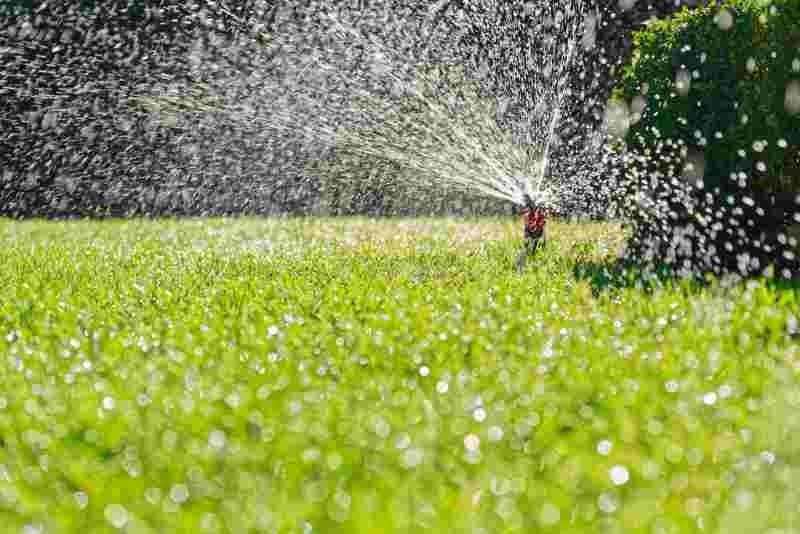
The best time to begin watering is when your grass shows signs of dryness. You can start watering around mid- to late May, but don’t feel under pressure. Look out for visible footprints on your lawn.
Water deeply and infrequently to establish strong roots; use 1 inch per week. Ensure that you apply half an inch of water per hour to prevent runoff.
Hear it from a pro: Hampton Roads pro Morris usually starts watering mid-May at the earliest:
“The weather here in Virginia Beach is so unpredictable that every day is a play-by-ear kind of day until mid-May at least, when the temps tend to stay closer to 70° and above more consistently,” Morris says.
Watch Out for Diseases
Fungi are infamous for attacking poor lawns that receive too much water, but they even try to make their home in healthy lawns. That’s why you need to look out for them at all times. The prime time to do so is from May to July.
June
Dethatch and Aerate Warm-Season Grasses if You Haven’t Yet
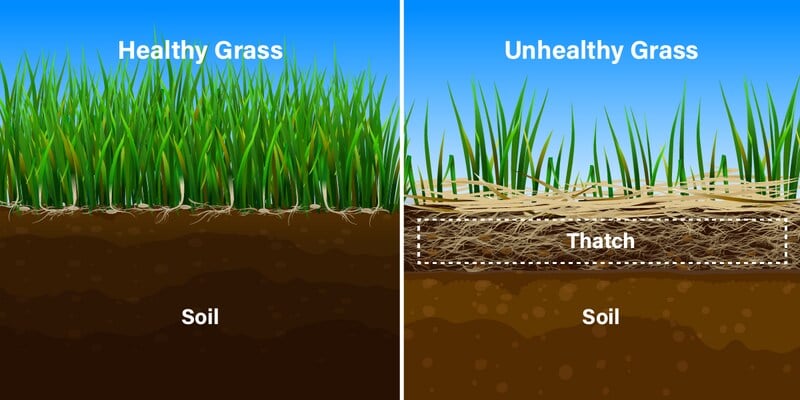
If you have warm-season grass and you haven’t dethatched and aerated in April or May, you can still do it until August. Fertilize and overseed afterwards. If you don’t overseed, you can usually skip dethatching; thatch is sparsely a problem in Virginia lawns.
Fertilize Warm-Season Grasses if You Haven’t Yet
If you have warm-season grass, and haven’t fertilized in April or May, do so from June to late August. However, take note that some warm-season grasses, like bermudagrass, don’t actually need fertilizer.
Overseed Warm-Season Grasses if You Haven’t Yet
After you fertilize is a prime time to overseed. If you fertilized in June, wait two weeks, then overseed.
Watch Out for Diseases
Continue to watch out for diseases throughout the season, especially until July.
July
Dethatch and Aerate Warm-Season Grasses if You Haven’t Yet
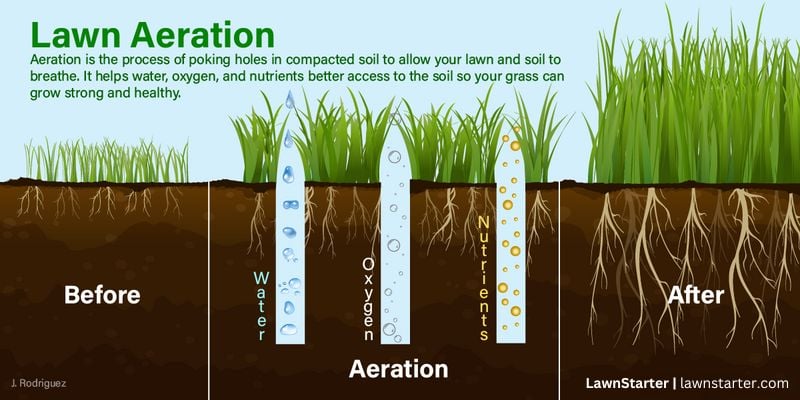
Dethatch and aerate warm-season grass before you fertilize. If you haven’t done it yet in April, May, or June, you can do it in July or August. If you don’t overseed, you can usually skip dethatching; thatch is sparsely a problem in Virginia lawns.
Fertilize Warm-Season Grasses if You Haven’t Yet
If you have warm-season grass, and haven’t fertilized yet in April, May, or June, do so from July to late August. However, take note that some warm-season grasses, like bermudagrass, don’t actually need fertilizer.
Overseed Warm-Season Grasses if You Haven’t Yet
After you fertilize is a prime time to overseed. If you fertilized in July, wait two weeks, then overseed.
Watch Out for Diseases
Continue to watch out for diseases throughout the season, especially in July.
August
Dethatch and Aerate Warm-Season Grasses if You Haven’t Yet
If you haven’t done so already in April to July, dethatch and aerate in August. If you don’t overseed, you can usually skip dethatching; thatch is sparsely a problem in Virginia lawns.
Fertilize Warm-Season Grasses if You Haven’t Yet
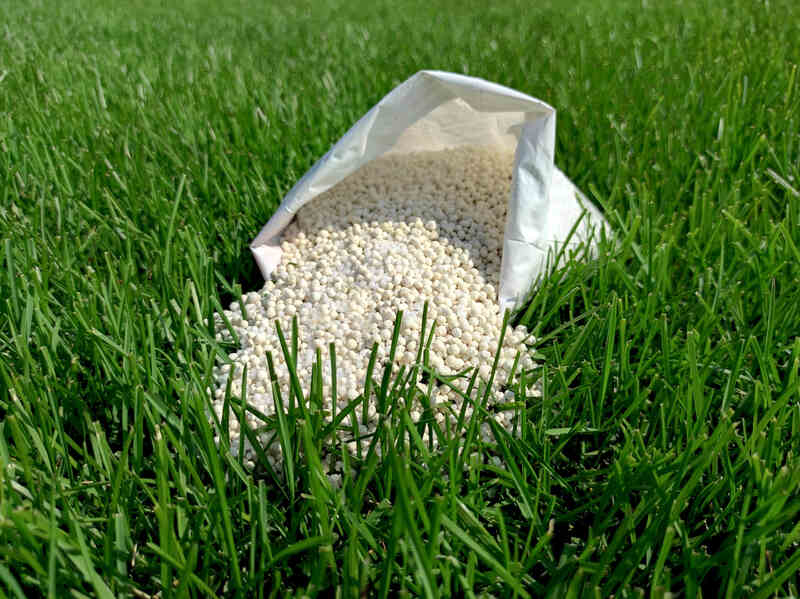
If you have warm-season grass, and haven’t fertilized in April to July, do so now. However, take note that some warm-season grasses, like bermudagrass, don’t actually need fertilizer.
Overseed Warm-Season Grasses if You Haven’t Yet
After you fertilize is a prime time to overseed. If you fertilized in August, wait two weeks, then overseed.
September
Dethatch and Aerate Cool-Season Grasses
If you have cool-season grass, leave dethatching and aeration to September, October, or November, before you fertilize. If you don’t overseed, you can usually skip dethatching; thatch is sparsely a problem in Virginia lawns.
In Virginia’s mountainous regions, you may need to dethatch, aerate, fertilize, and overseed earlier, just to be sure. The temperatures there tend to be colder. However, it depends on the region, too. Take, for instance, Lynchburg or Roanoke. Their higher elevation is different from most of Virginia, but because they’re in the south, the temperature difference isn’t too significant. If that’s too confusing, don’t worry; you can easily find a pro in Lynchburg or Roanoke.
Fertilize Cool-Season Grasses
If you have cool-season grass, fertilize from September to November. If you want to overseed as well, fertilize no later than October 1. Why? Because, as you’ll see below, you need to wait two weeks before you overseed. And anytime after October 15 is too late to do it. But September is still the perfect time for this.
If you live in the mountains where it’s cooler, fertilize sooner rather than later, just to be sure that it doesn’t get too cold.
Overseed Cool-Season Grasses
The same applies here as with warm-season grasses: you should overseed two weeks after fertilizing. September is the perfect time to do it, because anytime after October 15 is too late.
Once again, in the mountains, you may need to do it even earlier, because the temperatures there are generally colder.
October
Dethatch and Aerate Cool-Season Grasses if You Haven’t Yet
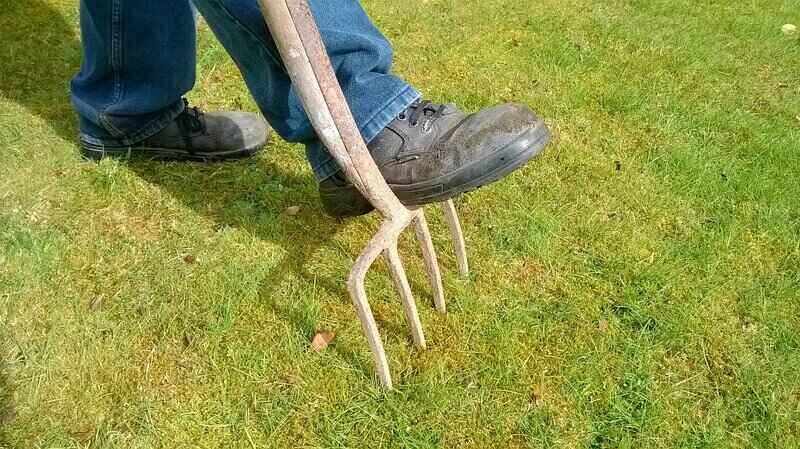
If you have cool-season grass, and haven’t done so yet, you can dethatch and aerate in October, or November, before you fertilize.
If you plan on fertilizing and overseeding afterwards, make sure you get the job done by October 1. Otherwise, you’ll have no time to overseed. If you don’t overseed, you can usually skip dethatching; thatch is sparsely a problem in Virginia lawns.
Fertilize Cool-Season Grasses if You Haven’t Yet
If you have cool-season grass, and haven’t fertilized yet, it’s generally still safe to do so in October. But make sure you do it by October 1 if you also want to overseed.
Overseed Cool-Season Grasses if You Haven’t Yet
Overseeding in October still works. However, don’t wait too long; as mentioned above, you have to overseed before October 15, or the soil will be too cool to germinate seed.
November
Aerate Cool-Season Grasses if You Haven’t Yet
If you have cool-season grass, and haven’t done so yet, you can aerate in November, before you fertilize. You can skip dethatching unless you have a thatch problem. It’s not usually needed in Virginia, unless you also overseed.
Fertilize Cool-Season Grasses if You Haven’t Yet
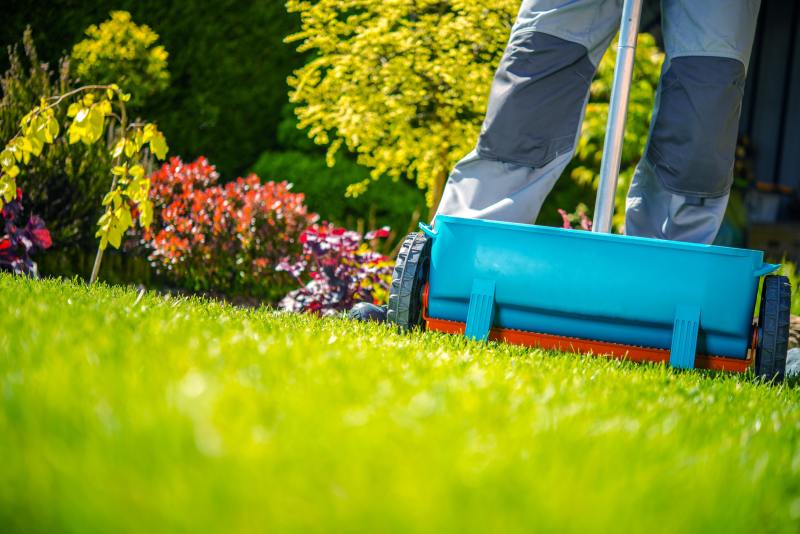
If you haven’t fertilized your cool-season grass yet, you can still do it in November. However, don’t overseed in November; it’s too late for grass to germinate.
Stop Mowing and Clean Up Leaves
Most grasses stop growing when temperatures hit 55 degrees or below. In Virginia, this normally happens by late November. Keep in mind that grasses in Virginia’s mountainous regions may stop growing sooner, as the temperatures in these regions are often cooler than the rest of the state.
Once you notice that your grass stops growing, you can do your last mow of the season and rake fallen leaves. Your last mow of the season should be to the shortest recommended mowing height for your grass type. Check out the “Mow Smart” section above for more information.
Hear it from a pro: Morris says that while November is the most common period to stop mowing, it varies year by year. You may even need to mow throughout the winter.
“Normally, around November is when I expect my mowing to fall back and leaf cleanup to begin,” Morris says. “However, the weather here in Virginia Beach definitely has a mind of its own. I’ve literally stood on my front porch where it was pouring down heavy rain and walked through my house to the backyard only to see sunshine and everything dry as a bone. I had a few properties this year that never went dormant, so I kept mowing as long as the temps were at or above 50 degrees.”
FAQ
Which weeds are common in Virginia?
Virginia lawns get invaded by several weeds. For example:
- Crabgrass
- Common chickweed
- White clover
Check out more typical Virginia weeds in our article.
Which plants are native to Virginia?
Virginia has several beautiful, native plants. For example:
- Purple passionflower native to Accomack and Northampton
- Wild or eastern red columbine native to Central Rappahanock Virginia
- Purple giant hyssop native to Southwestern Virginia
Check out more native Virginia plants in our article.
Is it illegal to mow grass into the road in Virginia?
Yes. According to local law, you can’t throw or deposit any substance onto a road that creates a hazard to the traveling public (The Code of Virginia 18.2-324). Grass clippings create a slick surface that’s dangerous to drive and ride on.
Easy Lawn Care Year-Round
You probably have much more to do throughout the year than care for your lawn. Plus, it takes so much research and effort to do it properly, unless you’re a pro.
Lawnstarter provides lawn care pros throughout Virginia. Get an instant quote.
Sources
Hampton Roads Lawn Care Expert Chelsea Morris
Main Image Credit: Harvey House Radford Virginia / Skye Marthaler / Wikimedia Commons / CC BY-SA 3.0
